Keywords: Healing PTSD.
Continuously overwhelming emotions that give rise to a PTSD condition have a specific set of binding factors present that tie emotion to the story of what happened to you.
These binding factors are guilt, blame, shame, self-reproach, embarrassment, pride, regret, self-righteousness, and self-pity. It is these that tie up core emotions of anger, sadness, and fear. It is those thought patterns and emotions that keep regurgitating the hyper and hypo activities of mind and body.
Healing PTSD: The Way Out is the Way In
It is these binding factors that make it so hard to move out of a traumatic state. These binding factors act as a buffer to help you deal with feeling overwhelmed; at the same time, they keep the whole wheel of suffering ongoing. They are the lube that oils the wheel, for better and for worse.
+ Read the Complete Meditation for PTSD Guide here
If you look closely at your thought patterns, these are the intermediary—the glue—between your thoughts, which go over an event, place, person or circumstance and your emotions, which will be some form of anger, fear or sadness.
Continuously overwhelming emotions that give rise to a PTSD condition have a specific set of binding factors present that tie emotion to the story of what happened to you.
Self-righteousness and pride are the toughest ones to work through because of their tendency towards self-indulgence and disconnection from others, though all of these are tough to sit with in their own right.
How Does it Look from the Inside Out
Let us look at healing PTSD and put that in perspective through some examples:
- Gautam’s parents split up when he was young. His parents were forever fighting with each other, and he didn’t get the attention he needed as a child. As an adult, he has periodic outbursts of anger that get projected onto anything and anybody through his impulsive wish to blame.
- Suzanna was molested as a child by a family member. She has never really talked about it. She knows what happened was wrong, but her shame prevents her from addressing her deep anger and fear of fully acknowledging what happened to her.
- Jim was drafted for several duties and has seen buddies die on the field. He is fed up with the injustice, hyper-stress, and helplessness of it, but pride (you weren’t there; you don’t know what it is that I went through) ties up his anger and prevents him from seeking help.
These are straightforward examples of already great inner complexity. It gets more complicated after having been subjected to long-term abuse or neglect; incidents in childhood that were severe issues over several different periods of time and different in nature.
Working Towards PTSD Healing and Resolution Through Negation
My point is that there is always a binding factor present within each Post-Traumatic Stress Disorder Symptom, and it has to be negated through awareness without feeding it with more energy; this is what prevents you from being continuously stuck in hyper and hypo-activation.
Negation is being aware, first of all, of what is occurring. Secondly, it is then feeling into the movement underlying the thought process that stimulates your personal story, the emotions within it, and its binding factors.
It is body sensation that helps you to observe non-dualistically; that aids in discouraging further build up and repetition, and thus PTSD healing. It is the refusal of engagement with blame, guilt, self-reproach, shame, etc. that shifts awareness to the core emotions, and when the capacity grows to hold these, they can then be processed.
- Do you want to reduce anxiety, hyper-vigilance, and being “ON” alert constantly?
- Do you want to move out of a dissociated, fatigued and depressed state?
- Do you want to work with anger and reestablishing boundaries?
- Are you interested in sleeping better, having better relationships, and being able to live a normal life?
